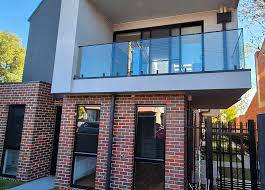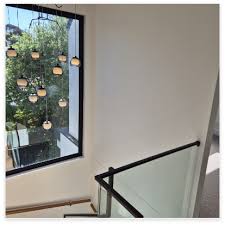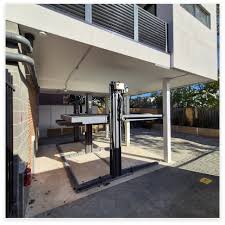
granny flat builders https://www.prevailinghomes.com.au/
Granny flat builders play a vital role in helping homeowners create versatile, comfortable secondary dwellings on their property. Whether you are planning a self-contained unit for aging relatives, a rental investment, a work-from-home studio, or simply additional living space, understanding the process and considerations that experienced granny flat builders bring to a project will save time, money and stress. This article outlines the key stages of design and construction, the regulatory and practical concerns you should expect, and tips for choosing the right builder to deliver a quality outcome.
Begin with purpose. The most successful granny flat projects start by clarifying their primary function: long-term independent living for family, short-term rentals, guest accommodation, or a private studio. The intended use drives layout decisions, accessibility features, finishes and the level of privacy required between the existing home and the new unit. Granny flat builders will ask about expected occupancy, mobility needs, parking and any special infrastructure for heating, cooling or medical equipment. Clear goals at the outset allow designers to produce plans that are both practical and futureproof.
Next, consider zoning, council approvals, and site constraints. Many jurisdictions have specific requirements for secondary dwellings—setbacks, maximum floor area, overshadowing rules and car parking provisions. Professional granny flat builders often work closely with planning consultants and certifiers to navigate local rules efficiently. A good builder will conduct a site analysis that evaluates orientation, slope, tree protection, stormwater management and access. Understanding these constraints early prevents costly redesigns and delays during construction.

Design quality matters. While a compact layout can be highly efficient, thoughtful design ensures the unit feels spacious, bright and comfortable. Orientation to capture natural light, clever storage solutions, and open-plan living can maximize perceived space. Accessible design features—zero-step entries, wider doorways, lever handles, and ground-floor bedroom and bathroom options—add long-term value and adaptability. A reputable granny flat builder will present multiple floor plan options and explain trade-offs between size, amenity and budget.
Material selection and build methods affect cost, speed and sustainability. Traditional brick and timber framed constructions each have advantages: brick offers durability and thermal mass, while timber framing can reduce build time and often cost. Off-site modular construction is an increasingly popular route among granny flat builders because it can accelerate delivery, improve quality control and reduce on-site disruption. Consider insulation, glazing, and energy-efficient appliances to lower running costs; investing a bit more in thermal performance can dramatically improve comfort and reduce utility bills.
Budgeting and cost transparency are essential. Costs vary with size, finishes, site complexity and services required (septic, sewer connections, electrical upgrades). Detailed quotes from granny flat builders should itemize site preparation, foundations, structure, finishes, joinery, appliances and external works like decking or landscaping. Allow contingency for unforeseen issues—soil conditions, council requests or supply disruptions. Additionally, consider lifecycle costs: durable materials and low-maintenance finishes often cost more upfront but save money over time.
Project management and timelines are another core competency of skilled granny flat builders. Building a secondary dwelling involves coordinating trades, inspections and supplier deliveries. A professional builder provides a realistic timeline, communicates delays proactively, and secures necessary inspections and certifications. Minimizing disruption to the primary residence is important to most homeowners; experienced builders use staging and site protection strategies to keep the main home accessible and intact throughout the works.
Accessibility and aging-in-place features are a common priority for granny flats intended for older occupants. Integrating universal design principles—single-floor layouts, non-slip surfaces, accessible bathroom design, and easy-to-use kitchen fittings—ensures safety and independence. Even if current occupants are mobile, these features increase the long-term utility and market appeal of the unit. Many granny flat builders routinely advise on such upgrades and can incorporate them without compromising aesthetics.

Sustainability is increasingly central to modern granny flat projects. Solar panels, rainwater harvesting, high-performance insulation, passive solar orientation and energy-efficient appliances reduce environmental impact and operational costs. Low-VOC paints and sustainable materials also contribute to indoor air quality. Some builders offer green building certifications or energy-efficiency packages—ask about these options and potential incentives or rebates in your area.
Returns and rental potential: a well-designed granny flat can add significant value to a property and generate reliable rental income. Location, layout, quality of finishes and separation from the main dwelling influence rental demand. Granny flat builders with local market knowledge can recommend design features that appeal to tenants—like a separate entrance, private outdoor space and good natural light. Before moving ahead, research local rental rates and occupancy trends to model likely returns and payback periods for your investment.
Choosing the right builder is perhaps the most important decision. Look for builders with specific experience in granny flats, solid references, a portfolio of completed projects and transparent contracts. Verify licensing, insurance and that they handle necessary approvals or work with trusted specialists. Communication style and cultural fit matter—choose a builder who listens, explains options clearly and maintains regular updates. Obtain multiple quotes and compare scope rather than just price; the lowest bid may omit crucial works that surface as expensive extras later.
Practical tips: visit completed projects or speak with previous clients, confirm a realistic warranty and defects liability period, and ensure all variations are documented in writing. Establish a payment schedule tied to milestones rather than dates, and request written confirmation of any changes to the scope or finish. If you’re planning to rent the unit, consult a property manager early for guidance on design priorities that maximize appeal and minimize maintenance.
In conclusion, granny flat builders bring a blend of design insight, technical skill and regulatory knowledge to deliver secondary dwellings that enhance lifestyle and property value. Start with a clear brief, engage builders who demonstrate experience and transparency, and prioritise quality and sustainability for the best long-term outcome. With careful planning and the right team, a granny flat can become a comfortable home, a valuable investment, and a flexible solution for changing household needs.
